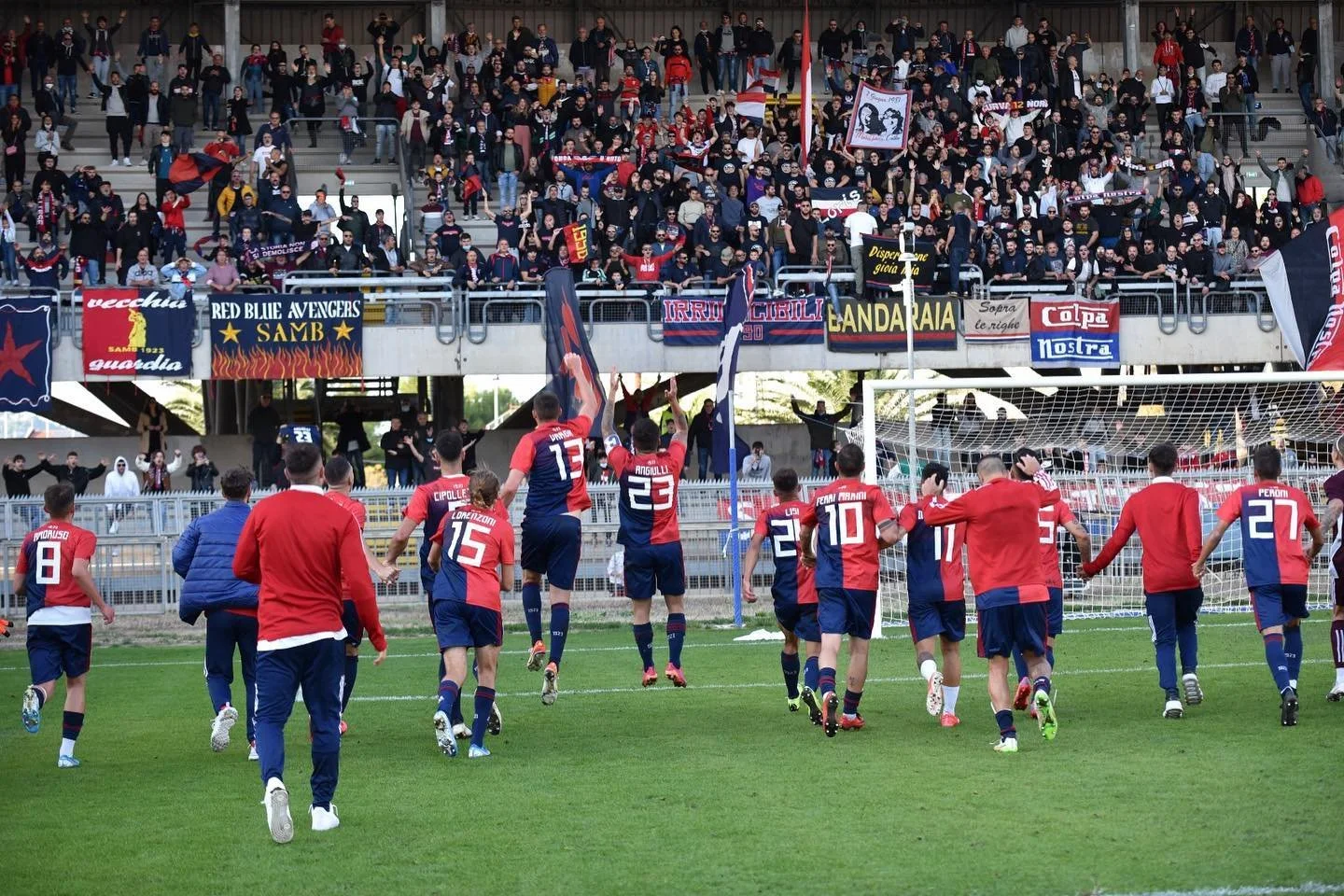Sambenedettese and the Boom-Bust Reality of Italian Football
Somewhere along Italy’s Adriatic coastline, about halfway between Ancona and Pescara, lies the town of San Benedetto del Tronto. Named after a soldier who came to prominence during the Roman reign of Emperor Diocletian, the city is an important fishing port and tourist location, home to mountain monasteries, food markets and vast stretches of glistening beaches.
In the same province of Ascoli Piceno, around 50 kilometers inland as the crow flies, is the town of Arquata del Tronto. The town’s luscious green hills were the backdrop to Pietro Germi’s 1968 seminal film Serafino, starring famous Italian singer, actor and filmmaker Adriano Celentano.
It’s an area of Italy steeped in a rich regional history.
And while the area doesn’t necessarily boast a footballing heritage comparable to that of their Romagnoli neighbours to the north or their Tuscan neighbours to the west, for the fans of smaller clubs who call the region of Marche home, the passion for the game remains the same. Sadly, the same chaotic pitfalls, shortcomings and double-dealing that has so often plagued teams in the lower divisions of Italian football are also present.
A.S. Sambenedettese, the fourth-division club that calls the beautiful town of San Benedetto del Tronto its home, is undergoing a period of madness and mayhem that is all-too-familiar.
Since 1994, the club has undergone five separate rebirths. Each time, incoming owners have refounded the club by moderately altering the name, assuming all debts under a new company, and appearing to do nothing to repay creditors or provide any semblance of stability.
After a lengthy litigation battle navigating financial irregularities and bankruptcy charges which ultimately resulted in the club’s expulsion from Serie C, the current owner, Roberto Renzi, took control in 2021. Things have not improved.
In early February of this year, the Associazione Italiana Calciatori–the Italian Footballers’ Association–was forced to intervene on a matter between the players and the club. Their stepping in was a result of, according to a statement by the AIC, “the non-payment of accrued compensation, the absence of any clear information regarding sports projects, and therefore the very survival of the company.” The club had stopped paying wages in an effort to avoid going bust.
Later in February, it was reported that the players had not even had contact with the club for two weeks. In a statement on the AIC website, the players announced a “state of turmoil,” which would see them halt all sporting activities from Sunday March 5th until they had been paid. “We continued to honour the shirt as long as we could by drawing on our personal resources,” the statement said. “Sorry for the city, for the fans and all our supporters.”
Rather than chastise the players for putting an indefinite stop to their season, Sambenedettese supporters encouraged the strike. In an incredible act of solidarity, senior players and representatives of the Sambenedettese supporters’ group met in a local restaurant to discuss the situation, where it was decided that the rossoblu fans would back the players.
Sunday’s home game against Porto D’Ascoli was a watershed moment in the dispute. Fans attempted to stop the entrance of both team buses, and only a handful of the players had remained committed to the strike action. The game went ahead, and even Roberto Renzi was present. On the advice of the police, he remained only for the first half of the game, which ended 0-0. The club enforced its media blackout following the final whistle, which has become a feature of recent home games.
The following Monday, another blow struck. Quanton Commodities, an English company beset with its own corporate bankruptcy issues in recent years, announced that it was pulling out of a potential takeover. The defining factor appeared to be Renzi’s unwillingness to enter negotiations about the fee.
It’s a sad state of affairs. The club has endured a six-week period that would crumble even the most tightly-run football institutions. Zoom out, and you’ll see that the chequered history of Sambenedettese is sadly not unique. While there was some online noise about crowdfunding attempts to save the club, the issue goes far beyond the city walls of San Benedetto del Tronto.
The landscape itself is broken, and made ever more precarious by the example set by Italy’s biggest clubs.
In January, Juventus were handed a 15-point deduction by the FIGC for alleged manipulation of transfer balance sheets, with a UEFA investigation into breaches of Financial Fair Play and licensing rules still ongoing.
Meanwhile, Inter Milan are teetering on the brink of financial collapse. Their cryptocurrency shirt sponsor, Digitalbits, reportedly owes the club around 25 million euros. The club’s debt burden is so gigantic that year-on-year Champions League qualification is not only a sporting target but a financial necessity.
Bottom of the table Sampdoria were forced to defer some players’ wages (mutually agreed, it should be added) for a quarter, to stave off the imminent threat of bankruptcy. Massimo Ferrero, the club’s owner who resigned in 2021 due to a police investigation into alleged corporate crimes, refuses to sell the club.
Clubs like Parma, Palermo, Catania and Venezia–among many, many others–have seen multiple bankruptcies and rebirths in recent years, and tensions have gotten so bad at some clubs, like Fiorentina and Ternana, where owners and fans have had public clashes.
The attitude of some owners towards the situation as a whole has been bafflingly short-sighted.
Even Aurelio De Laurentiis, the owner and chairman of a Napoli side who are about to celebrate their first Scudetto since 1989, recently complained of the prospect of Serie A’s financial might being diluted by smaller clubs entering the league. “Democratically, everyone must be given the right to arrive, but limits are needed,” he said. “It’s a problem if teams that nobody watches on TV arrive in Serie A: a championship with clubs that don’t have economic capacity is busted and compromised.” One has to wonder whether he would feel the same about Bari–another club he owns–should they achieve promotion from Serie B.
If clubs in Serie A are exposed to the perpetual boom-bust cycle and ownership turbulence then what hope is there for clubs lower down the pecking order? The Berlusconi, Cellino, De Laurentiis-type figures are great entertainment value. But can you rely on them to provide stability for your football club? Probably not. Looking from afar, their chaotic nature has always been one of the idiosyncrasies that most endear people to the Italian game. It’s just worth remembering that this chaos comes at a price. And–as Sambenedettese supporters know all too well–it’s the fans that are left to pick up the bill.



